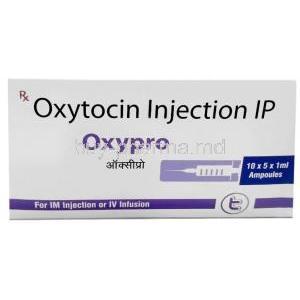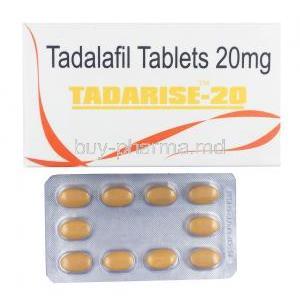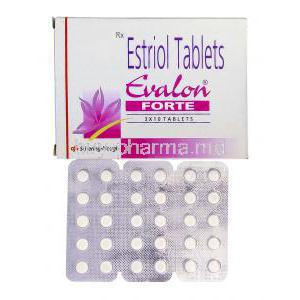Oxytocin Injection
- I. Introduction
- II. Composition of Oxytocin Injection
- III. How Oxytocin Works
- IV. Uses of Oxytocin Injection
- V. Off-Label Uses of Oxytocin Injection
- VI. Dosage and Administration
- VII. Side Effects of Oxytocin Injection
- VIII. Important Precautions
- IX. Warnings and Contraindications
- X. Interaction with Other Medications
- XI. Administration to Specific Populations
- XII. Storage and Handling Precautions
- XIII. Overdosage
- XIV. Careful Administration
I. Introduction
Oxytocin Injection is widely recognized for its impact on modern healthcare, specifically in the fields of obstetrics and gynecology. Derived from the natural hormone oxytocin, known for its functions in social connections, reproduction, and labor, this artificial form is a powerful tool for medical treatment. Looking back to the 1900s, the discovery and synthesis of oxytocin by scientists marked a turning point in maternal healthcare, reshaping practices related to childbirth and maternal well-being.
II. Composition of Oxytocin Injection
The Oxytocin Injection is carefully formulated to be highly effective and safe. It contains oxytocin, a replica of the hormone naturally produced in the human brain. Its main purpose is to stimulate contractions in the uterus during childbirth and lessen delivery bleeding. The addition of excipients, such as sodium chloride, acetic acid, and water for injection plays a role in maintaining the solution's stability, sterility, and ease of administration.

III. How Oxytocin Works
The way oxytocin works is an example of how amazing the human body is. When it's given, it focuses on the muscle cells in the uterus and attaches to oxytocin receptors to start contractions. This action imitates the release of oxytocin during childbirth, making it easier for the baby to be born. Besides helping with labor, oxytocin also strengthens the bond between mother and child. Reduces bleeding after giving birth, highlighting its many roles in human biology.
IV. Uses of Oxytocin Injection
-
Oxytocin Injection for Labor Induction and Augmentation:
- Oxytocin is used to begin or improve contractions during labor. It helps kickstart labor in pregnancies that do not begin naturally. Additionally, it can reduce bleeding after childbirth1.
- Labor induction: If the membranes are intact, an amniotomy (breaking of the water) should be performed before commencing oxytocin. Continuous electronic fetal monitoring is essential during oxytocin administration2.
- Labor augmentation: When labor progress slows down, oxytocin can help stimulate contractions, reducing the risks of prolonged labor2.
-
Treating Postpartum Hemorrhage:
- Oxytocin’s ability to contract the uterus after delivery is essential in preventing excessive bleeding. This is particularly important because postpartum hemorrhage is a major cause of maternal deaths worldwide2.
-
Other Approved Uses:
V. Off-Label Uses of Oxytocin Injection
Oxytocin Injection is being used in ways beyond its intended purpose. It is being studied for its benefits in neuropsychiatry and pain relief. The positive effects it has shown in reducing anxiety and depression symptoms, helping with spectrum disorders, and its investigation for treating chronic pain conditions highlight the growing range of therapeutic possibilities associated with oxytocin.
VI. Dosage and Administration
Administering Oxytocin Injection requires attention to detail. The prescribed doses differ depending on the particular condition being addressed, whether it's for inducing labor or managing postpartum hemorrhage. The medication can be given through infusion or intramuscular injection, and adjustments in dosage are made for different groups of individuals, such as those with kidney problems or heart issues, to ensure both safety and effectiveness.
VII. Side Effects of Oxytocin Injection
While Oxytocin Injection can be helpful, it does come with negative repercussions.
a. Common Side Effects
- Feeling sick.
- Throwing up
- Irregular heartbeat
- Increased uterine activity
b. Serious Side Effects and Complications
Water intoxication and hyponatremia can occur due to the effects of oxytocin, potentially causing an imbalance in fluid levels. Uterine rupture, though rare, poses a risk, especially for women who have undergone previous uterine surgeries. Fetal distress may arise as a result of uterine contractions requiring vigilant monitoring. Having an understanding of Oxytocin Injection—its uses, administration, side effects, and precautions—empowers healthcare professionals to utilize its advantages while minimizing potential risks, thereby improving care for mothers and newborns.
VIII. Important Precautions
The use of Oxytocin Injection is crucial in neonatal care but it requires careful monitoring to prevent any negative effects. It's essential for healthcare providers to closely watch the activity of fetal heart rate and the well-being of the mother during administration to make necessary dosage adjustments. Customizing the dosage is key because modifying it according to how the patient responds can reduce the risks linked with giving too little or too much medication.
IX. Warnings and Contraindications
Oxytocin Injection should not be used in situations. These include conditions such as disproportion, unfavorable fetal positions, and instances where vaginal delivery is not recommended. It is important to consider potential risks and warnings for particular patient groups, especially those with a previous history of cesarean delivery or uterine surgery, to avoid complications like uterine rupture.
X. Interaction with Other Medications
The effects of oxytocin can be. Reduced when taken with other medications. It's important to manage interactions, with anesthetics and vasoconstrictors to prevent any negative outcomes. Additionally, oxytocin might affect the results of laboratory tests by altering levels and water balance, so it's crucial to monitor these aspects regularly while undergoing therapy.
XI. Administration to Specific Populations
a. Administration to Elderly
Although there isn't a discussion about administering Oxytocin Injections to older individuals, it's important to approach the topic with care and consideration for the aging process and its associated physiological changes in line with the principles of geriatric medicine.
b. Administration to Pregnant Women and Nursing Mothers
The safety recommendations and instructions for giving oxytocin to mothers and breastfeeding moms emphasize the need for careful consideration, especially when balancing the advantages with the possible hazards for both the mother and baby.
c. Administration to Children
Oxytocin is not commonly utilized in environments, yet it's crucial to thoroughly assess dosage modifications and safety guidelines to prevent any negative outcomes. Monitoring should be customized based on the child's size and overall health condition.
XII. Storage and Handling Precautions
The effectiveness and safety of Oxytocin Injection depend on how it's stored and handled. It is advised to store the vials in a dark area to prevent deterioration. Following the recommended procedures for handling and disposing of the medication is essential to uphold sterility and safeguard the well-being of patients and healthcare professionals.

XIII. Overdosage
If an overdose happens, quick action is necessary. Overdosing may show signs like uterine activity, which could harm the baby or cause uterine tearing. Dealing with an overdose includes stopping oxytocin, treating symptoms, and considering surgery if there's a rupture in the uterus.
XIV. Careful Administration
In order to use Oxytocin Injection safely and effectively, healthcare professionals need to adhere to a set of guidelines. These guidelines involve understanding how oxytocin works, identifying situations where it should not be used, and being ready to address any negative reactions. Healthcare providers have a responsibility that goes beyond just giving the injection. It includes educating patients, monitoring their progress and safety, and making adjustments to ensure optimal results for both mothers and babies.


















